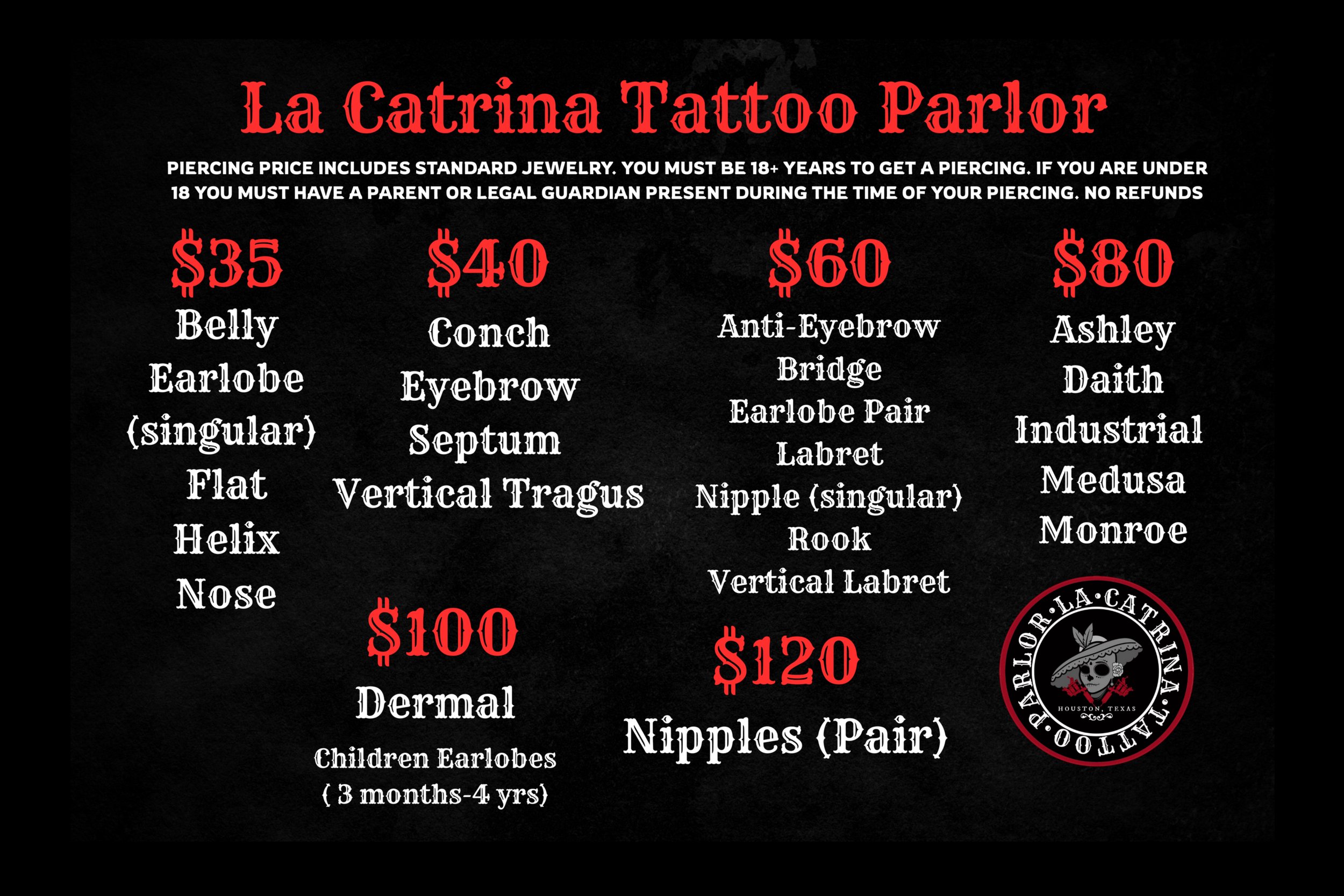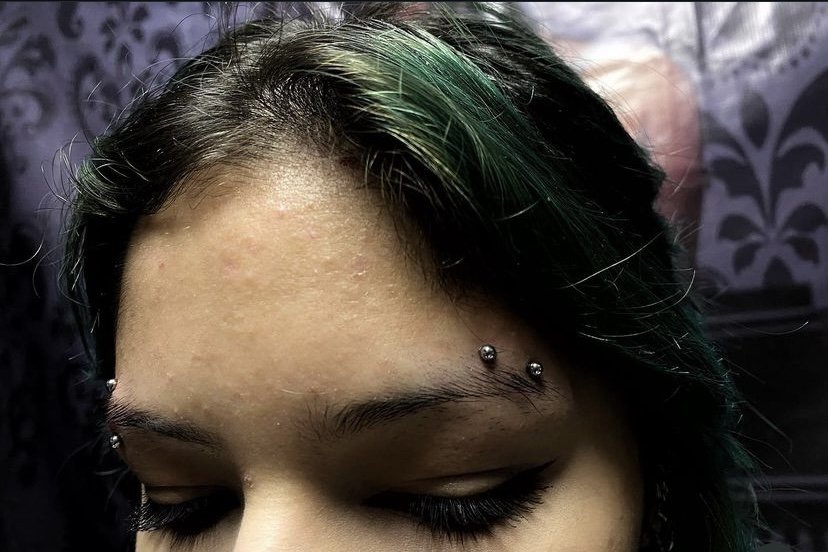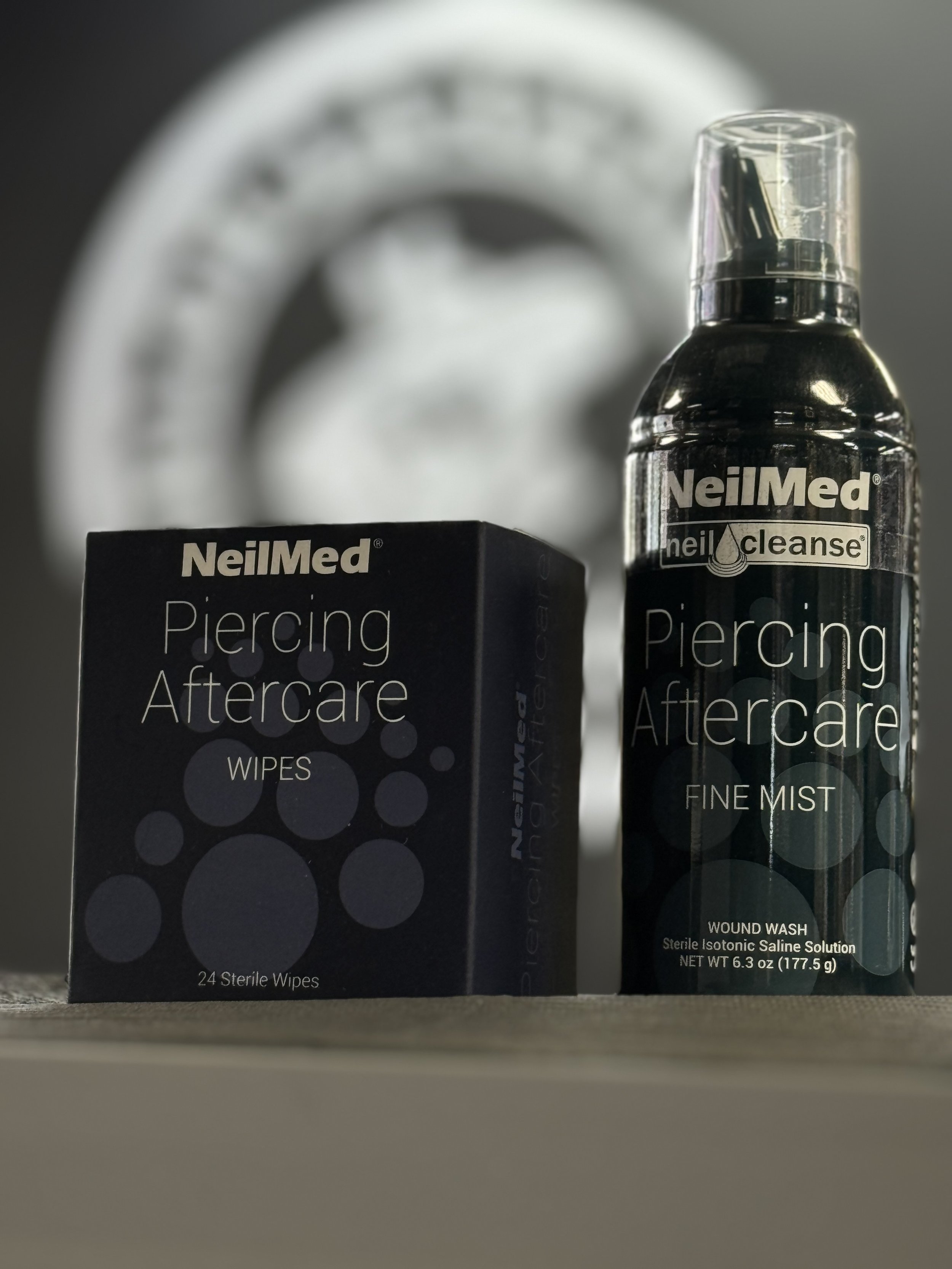Piercing Aftercare
Make sure before touching you’re Piercing You have clean hands!! I highly recommend avoiding using Rubbing alcohol, hydrogen peroxide, or ANY scented soaps!
For Ear, Nose, And Surface piercings use a Sterile Saline spray 2-3 times a day! Spray the Saline spray on the tip of a q-tip or folded paper towel and clean around both exits of the canal. Avoid over cleaning your piercing because it can cause it to dry out and become itchy and irritated. Avoid sleeping on the piercing as much as possible! Airplane pillows help with that. Remember to dry your piercing after you get out of the shower or wash you’re hair as that can lead to moisture bumps if not dried.
Oral Aftercare - Use an alcohol free mouthwash after you eat, drink, smoke, or consume anything other than water for the first 3/4 weeks of the healing process. gently brush the tongue with a soft toothbrush every morning and night. For swelling, take any over the counter anti-inflammatory medicine. You can also allow ice to rest on the tongue and melt slowly to ease the pain.
All other Questions or Concerns can be taken up with our piercer!
What to expect to see -
A piercing is a wound and that means all sorts of interesting reactions can happen to your body in response to this new wound and foreign object!
Bleeding is very normal, there can be minimal to moderate bleeding during the first 1 - 2 weeks of healing any body piercing. Often times during cleaning we can accidentally break the scab, keeping the piercing from bleeding and cause some to happen. Likewise, a bump, catch, or snag on the piercing can do the same. You can apply gentle pressure with some non-woven gauze to help staunch the bleeding, and it should stop after a minute or two. Don’t be alarmed if this happens initially with your fresh piercing.
Crust is Normal…
Many folks know that piercings produce debris during the healing process, most affectionately known as “crusties”. These little bits are normal secretions that are a byproduct of the healing process. It’s often a liquid secretion in an off-whitish, pale yellowish, or pale pinkish color that dries around the jewelry into said little crusties. During the healing process of a piercing you’ll deal with this on and off, and a large part of piercing aftercare is gently cleaning this away.
Swelling is part of our bodies’ natural wound-healing process, known as the inflammation phase of healing. It’s actually a sign our bodies are already hard at work mending our injuries. With a fresh piercing this is perfectly normal and to be expected. Some piercings, most notably oral piercings and more strenuous on your body ear piercings like industrials and triple forward helixes often come with more swelling than most.
Soreness and Tenderness Like I mentioned, a piercing is a wound. And no wound feels great to touch or mess with right after you’ve gotten it! Piercings are no exception. Swelling often comes with tenderness to the touch- and boy howdy can new piercings feel tender. Do your best to avoid unnecessary touches, movements, or playing with new piercings in order to allow the tenderness and swelling to improve enough to get back at it. Now some piercings may be more tender than others- things like industrials and orbitals, or doing a bunch of ear piercings at once- probably more tender. Oral piercings, especially tongue and lip piercings that affect eating and talking- probably more tender.
Tenderness shouldn’t be mistaken for pain, however. If your piercing seems abnormally or even excruciatingly painful, I would get a checkup with your piercer to see what may be causing you this discomfort.
Bruising and itching can also occur















